Cities aflame, schools bombed, civilians shot and killed — this is Ukraine. But it’s also Palestine, Syria, Yemen, Afghanistan and countless other places around the world. Yet while the devastation is the same, it isn’t treated as such. Where has the horror, outcry and response from the Canadian government been when it comes to those tragedies?
Racialized refugees, particularly Muslim ones, are securitized and deplored for their ‘cultural practices.’ This legitimates their exclusion and forcible removal. Even sympathetic liberals argue that procedures must be followed so that only those who ‘deserve’ asylum are allowed in, in order to ‘protect’ the ‘integrity’ of refugee and immigration systems, and the well-being of Canadian citizens.
None of these concerns have been raised with regard to Ukrainian refugees. Soon after the Russian invasion, the Canadian government prioritized refugee files from Ukraine and extended the time Ukrainian nationals can stay in Canada. It’s also mulling economic support for Canadians who take care of Ukrainian refugees. The Canadian government has even offered open-ended work permits and jobs, which would be unthinkable if these were Black or brown refugees. Security fears are absent.
As refugee law practitioners, we welcome the Canadian government’s quick action and response with respect to the Ukrainian crisis. But we’re also angry at the double standards. Canada’s gushing assistance to Ukrainians doesn’t represent tolerance and humanitarianism. Rather, these unprecedented measures reflect geopolitics and white supremacy.
Domestically, Canadian state machinery is more readily deployed when a single white woman goes missing than it has been for the murders and disappearances of countless Indigenous women. So too, Canada is ready to help European refugees while not only ignoring refugees from the Global South, but even Black and brown people stuck in Ukraine who are also at risk.
This article, which will examine the Ukrainian refugee situation in a broader context, drawing on our combined decades of experience as refugee law practitioners, hasn’t been written to downplay Ukrainian suffering. Rather, we wrote it because it’s only through critiquing double standards that we can ensure everyone is protected.
We raise this issue not because we want the Canadian government to reverse its assistance to Ukrainians. Rather, the response to Ukraine has demonstrated that a government often apathetic to refugees, which gives excuses for failing to resettle them, is able to help, and do so quickly.
We oppose refugee double standards in the hopes of extending this help to everyone, not just white Christians.
Less Equal Than Others
As a signatory to the 1951 Refugee Convention, Canada is required to provide protection to anyone, without discrimination, who is “persecuted for reasons of race, religion, nationality, membership of a particular social group or political opinion.” Unfortunately, despite a progressive image, Canadian immigration and refugee policy is racist. Those coming from the Global South face greater barriers than Europeans. Visa-free travel is granted to Western countries, making it easier to arrive and make a claim. In contrast, visa requirements are imposed whenever a Global South country is seen as “refugee producing.”
Refugees can also be removed due to “serious criminality” or being a “danger to the public.” Since racialized people are more likely to be charged with a crime and considered a “danger to the public” than white people, they are more likely to be removed. Allegations of racism continue to plague Canadian immigration and refugee systems, including the Immigration and Refugee Board (IRB), the tribunal charged with determining who is a Convention refugee.
The issue was worse, to a certain extent, under former prime minister Stephen Harper. At the time, the minister of immigration, Jason Kenney, engaged in a rehaul of the immigration and refugee systems, arguably with the goal of causing the system to implode, thereby giving the Conservatives an excuse to recoil on its commitments to refugees entirely. Kenney actively worked to exclude Mexican nationals, and Roma from Eastern Europe, particularly Hungary, from coming to Canada to seek asylum. He criminalized human smuggling, as opposed to human trafficking, and denied refugees basic health care. The consequence was a decline in the number of refugee claimants.
But what’s forgotten is that some of the most regressive immigration and refugee policies came under the Liberals. Prime Minister Jean Chrétien’s Liberal government wrangled a deal with the United States in the wake of American frenzy for security after 9/11, effectively shutting Canada’s border to refugees wishing to come here after transiting through the U.S. Thanks to the Safe Third Country Agreement (STCA), tens of thousands of refugees have been denied the ability to make a claim in Canada.
These regressive policies contrast with a public image of Canada welcoming refugees. No one has fostered this sacred image more than Prime Minister Justin Trudeau. When former U.S. president Donald Trump banned entry of people from several Muslim majority countries in 2017, Trudeau tweeted, “To those fleeing persecution, terror & war, Canadians will welcome you, regardless of your faith. Diversity is our strength.”
Was he sincere?
Refugee Politics
Amid rising right-wing populism, immigration and refugees were key issues in Canada’s 2015 federal election. The Conservatives weaponized Islamophobia, deciding to prevent Muslim women from wearing the niqab during citizenship ceremonies. The NDP, the official opposition at the time, denounced this hate. But they didn’t go far enough when it came to refugee issues, particularly the situation unfolding in Syria, possibly out of concern for maintaining their electoral base. Instead, the NDP made a far too modest proposal of allowing 10,000 refugees from Syria that year.
Trailing in the polls, the Liberals decided to position themselves as the party that would help refugees, true to their tradition of campaigning left and governing right. Trudeau condemned Harper’s Islamophobia, and promised to bring 25,000 Syrian refugees to Canada by the end of the year.
It worked, and the Liberals won a strong majority. Photo ops soon appeared of Trudeau welcoming Syrian refugees. The New York Times’ editorial board wrote that “Canada’s generosity — and Mr. Trudeau’s personal warmth and leadership — can serve as a beacon for others.” The Washington Post’s editorial board stated that “Canada is showing the way, with compassion and sound judgment.”
Sure, Canada was doing more than the U.S. and some European countries. But this “compassionate” assistance to refugees was modest and restricted. Syria’s neighbouring states were hosting millions of refugees. By the time Trudeau was welcoming the first Syrians, Germany had accepted hundreds of thousands. Meanwhile Sweden, with about a quarter of Canada’s population, welcomed more than 100,000 Syrians in 2016.
Even with such paltry numbers, it didn’t take long for the Liberals to change their tune. After the 2015 Paris terrorist attacks, the government decided to exclude unaccompanied Syrian men from the resettlement program. A cap of 1,000 per year was placed on private sponsorship from Syria and Iraq. Although the government eventually met its electoral promise of resettling 25,000 Syrian refugees, assistance quickly dwindled. Even as the Syrian civil war worsened, around just 20,000 more Syrians were resettled annually over the next four years.
In 2017, after Trudeau tweeted his support “to those fleeing persecution,” refugees passing through the U.S. started crossing the border to make claims in Canada. But in order to do so under the STCA, they were forced to avoid ports of entry, instead making irregular crossings. Walking in remote areas, many refugees died in the cold. Opposition to the STCA grew. Activists and the NDP demanded its removal.
Instead, Trudeau warned refugees not to come to Canada. He stated, “You will not be at an advantage if you choose to enter Canada irregularly,” as if those fleeing violence had a choice, or would pick crossing “irregularly” if they did. The once smiley prime minister engaged in fear mongering, stating that “we will enforce the existing rules to keep our communities safe,” insinuating that refugee claimants were somehow a danger to Canadians. The Liberals then tried negotiating with the U.S. to amend the STCA — not to help refugees, but to restrict their entry. Trudeau wanted the STCA to apply to the whole border, allowing Canada to also deny entry to those crossing irregularly. Thankfully, negotiations failed.
A year later, Canadians were horrified when reports came out of children being forcibly separated and locked up in detention centers in the U.S. near the border with Mexico. Trudeau condemned it, saying, “I can’t imagine what the families living through this are enduring. Obviously, this is not the way we do things in Canada.”
But it is. Detention is an often used tool in Canada’s anti-refugee arsenal, and can occur when someone is deemed a flight risk, their identity can’t be determined or they’re considered a “danger.” Racialized refugees are more likely to be detained, and for longer. For refugees with children, the choice is either to raise their child in detention or be separated from them. In one case, a refugee gave birth to her son while in detention. His first words were “radio check” — words guards say when they change shifts — and he was denied access to any toys.
Rather than overhaul detention, the Liberals have expanded facilities, allegedly to improve overcrowded conditions. Cases of detainees dying and going on hunger strikes at a new detention centre in Laval, Que., suggests otherwise.
The Impossible Becomes Possible
Not everyone buys into Canada’s progressive image. Activists have demanded Trudeau end arbitrary detention, revoke the STCA and allow the resettlement of more refugees. Each time these demands were presented, however, excuses were made. The Liberals either promised to ‘look into it’ without taking action, blamed procedure and bureaucratic inertia, or insisted that current measures were necessary to ensure safety.
Imagine the surprise among refugee advocates, lawyers and communities across the country when Canada acted so quickly in response to Russia’s invasion of Ukraine. Only five days after the invasion, the IRB announced that files from Ukraine would be prioritized. In the three decades that one of the authors of this piece has been working with refugees, the IRB has never been this quick to respond to any other humanitarian crisis.
Visas are granted to those who want to travel to Canada but agree to return to their country before the visa expires. Usually they’re denied to those leaving war zones, as it’s presumed that they won’t return home. However, not only were visas granted to Ukrainians (even those to whom they were previously denied), but they were processed quickly, in some cases within only two days, when turnaround time is typically weeks or longer.
Less than a month after the invasion began, the Canada-Ukraine Authorization for Emergency Travel (CUAET) was implemented. This authorization is unique to Ukraine, and an equivalent has never been put in place for other countries. Under CUAET, Ukrainians who are granted a visa can stay for three years, rather than the standard six months. Unlike with Syrian resettlement, there “will be no limit to the number of Ukrainians who can apply.” With Syrians, the Liberals argued that caps on private sponsorship were necessary because of backlogs. But despite a major backlog in visas, there’s no limit for Ukrainians. Apparently backlogs are no longer a barrier to helping those in need.
These are great initiatives. But where are they for Palestine? Or Yemen? Or Afghanistan? Just like Ukraine, these countries have been invaded and brutalized. The death tolls and number of refugees are similar to or worse than the numbers for Ukraine. They are still on-going.
Apologists will argue that refugees from the Middle East pose a security threat, unlike Ukrainians. For example, fears over ISIS resulted in restrictions on Syrian refugees. But there are also extremists in Ukraine. While the Ukrainian government may not be run by Nazis, as Russia claims, there are heavily armed neo-Nazi militias officially incorporated into Ukraine’s army and national guard. Recognizing these security risks doesn’t mean Canada should deny assistance to Ukrainian refugees. But it also shouldn’t be denying assistance to refugees who aren’t white, Christian Europeans.
To be clear, and as we noted at the beginning of this article, Ukrainians aren’t being welcomed out of Canadian tolerance or humanitarianism. Rather, they’re being welcomed because of geopolitics and white supremacy.
The Russia-Ukraine border is one of the longest in Europe, and Ukraine is the second largest country in the continent. Having it aligned more with the West, whether formally through NATO or by allowing Western troops to be stationed in its borders, would be of great benefit to these states, and weaken Russia. Along with giving military assistance, taking in Ukrainian refugees eases the burden on internal displacement, thus helping Ukraine potentially win the war and become closer to the West.
Geopolitics also helps to explain why despite anti-Arab racism and Islamophobia, Syrian refugees have been provided greater assistance than those from Palestine or Yemen. The president of Syria, Bashar Assad, has forged close alliances with Iran and Russia. In contrast, assisting Palestinians or Yemenis would shame Israel and Saudi Arabia, both Canadian allies.
But while an important factor, geopolitics can’t fully explain why Ukrainians are being welcomed this way. The role white supremacy plays is crucial. As victims of terrorism, crime and war, white people receive more news coverage and greater sympathy. It’s no different with Ukraine. Media has emphasized that unlike victims of other conflicts, Ukrainians are “civilized” and “look like us,” meaning white Europeans. Journalists have said that Ukrainians have “blue eyes and blonde hair,” and share “our” values. Given how quickly and generously the Canadian government acted, this discourse has clearly worked.
We also see white supremacy in the fact that only Ukrainians with Ukrainian citizenship or who have family with citizenship can apply through CUAET to come to Canada. Most non-citizens in Ukraine come from racialized and Muslim-majority countries, such as Azerbaijan, Nigeria, Syria and Turkey. With far-right militias and Ukraine’s neighbours prohibiting entry to racialized people, they are most at risk.
Refugee Status For All
All of this is not to suggest coming to Canada will be easy for Ukrainian refugees.
In addition to trauma, leaving home and losing family members, Ukrainians will face their own issues upon arrival. Language barriers will make securing employment harder, making it easier for bosses to exploit Ukrainians in low-wage jobs.
Eastern Europeans might benefit from being deemed as white, but within the racial hierarchy they rank lower than Western Europeans. When Poland joined the European Union in 2004, the United Kingdom considered Polish people to be more “desirable” immigrants than those coming from outside Europe. However, public sentiment soon turned against them, with Poles vilified and subjected to hate crimes, especially after Brexit. Romanians were also attacked, with UKIP leader Nigel Farage stating, “Any normal and fair-minded person would have a perfect right to be concerned if a group of Romanian people suddenly moved in next door.” If the war in Ukraine is prolonged and Ukrainians continue coming to Canada, sentiment could turn against them too.
Nevertheless, even if exploited and subjected to racism, the Canadian government is acting quickly and favorably for Ukrainians, as they should. But this is only being done because of their status as white Christians, and the geopolitical benefit of the move in helping Ukraine defeat Russia. If the government actually cared about humanitarianism, they would have extended this sort of treatment to people from the numerous countries in the Global South that have been invaded and destroyed. Instead, inaction has resulted in hundreds of thousands being sent back or unable to leave in the first place, sometimes resulting in their death.
But not all is lost. Canadian assistance to Ukrainians has unraveled decades of refugee policy lies. Saving face has become harder. Backlogs can no longer be an excuse for inaction, when they haven’t stopped unlimited visas being handed out to Ukrainians. Terrorism can’t justify restricting resettlement, when the existence of neo-Nazis militias in Ukraine hasn’t even been mentioned by the government. Bureaucratic inertia isn’t an excuse, when the government was able to create special authorization to help Ukrainians less than a month after the invasion.
Revealing these double standards makes it clear that the only barrier for helping other countries is willpower. Of course, a racist government will not act on its own. Only through pressuring them via naming and shaming will anything be done. Next time our government prides itself on tolerance, we can point to the various regressive measures we’ve outlined here. And when excuses are made, we’ll ask why there were no excuses for Ukraine.

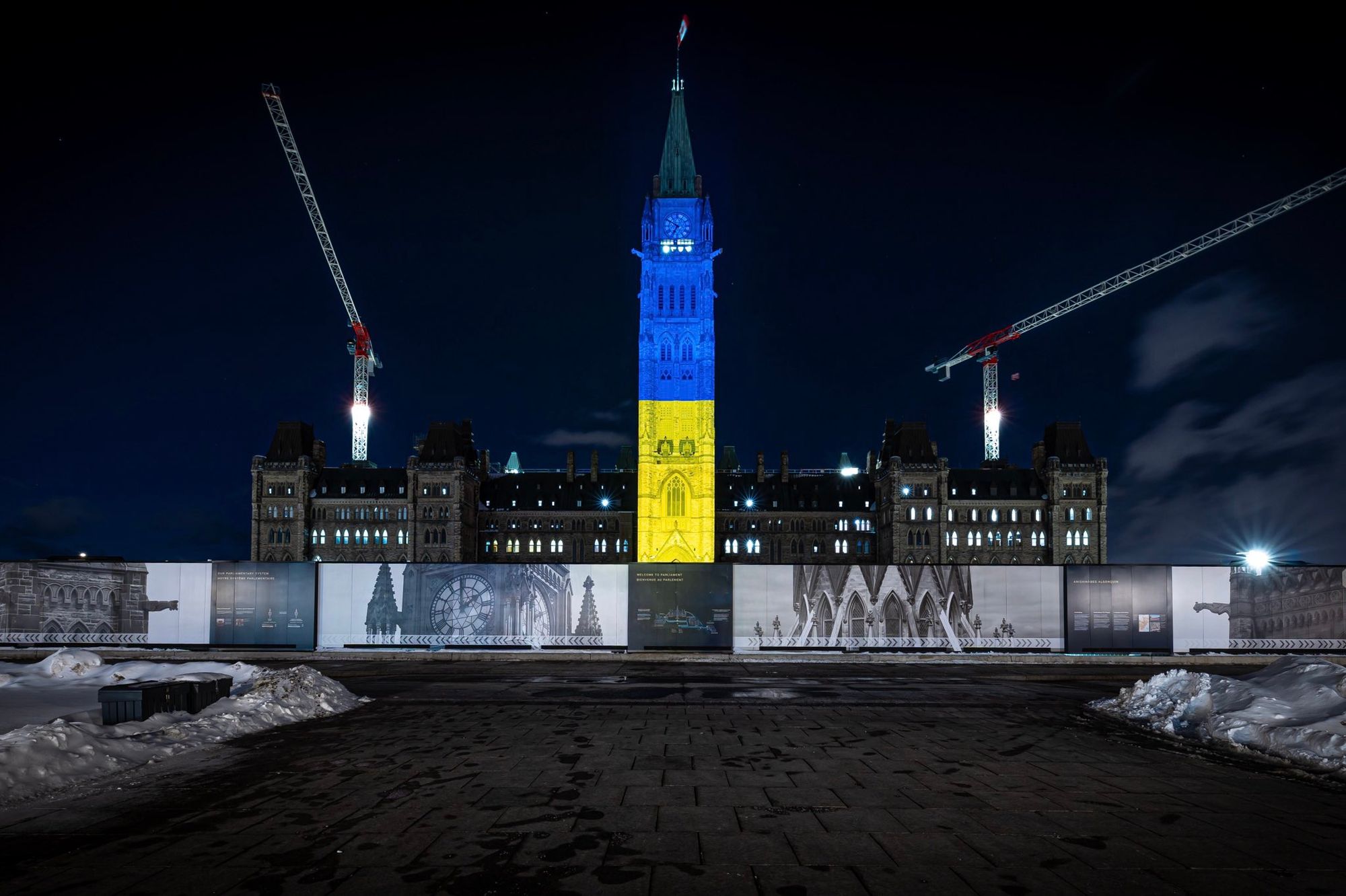
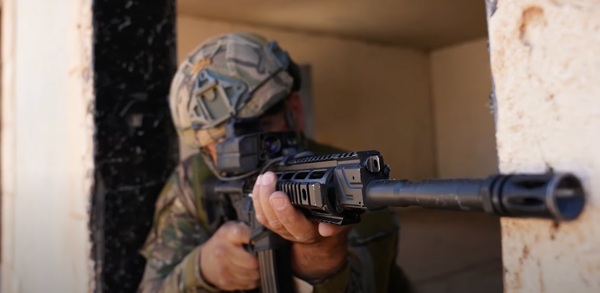
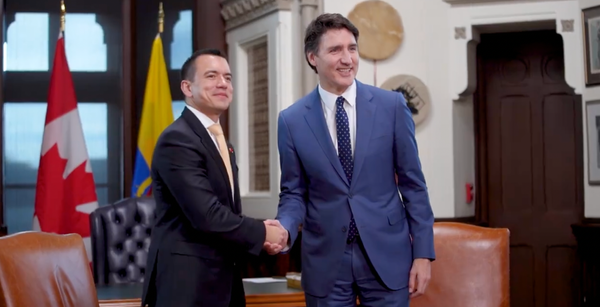
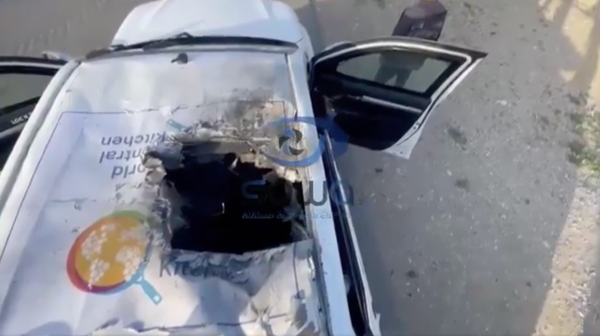
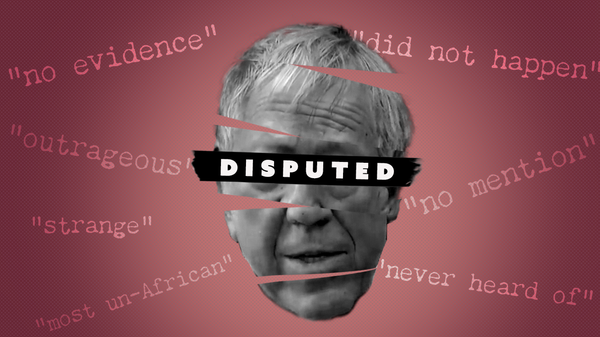
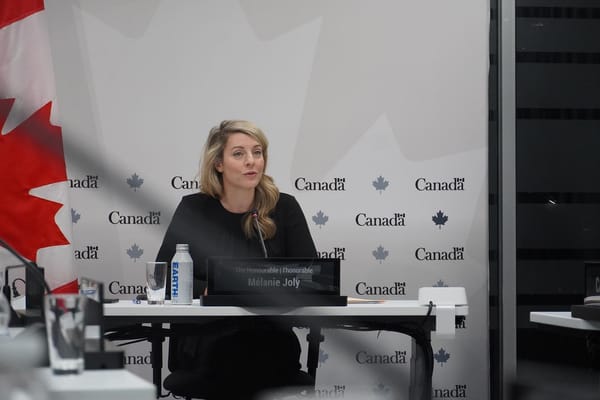
Member discussion